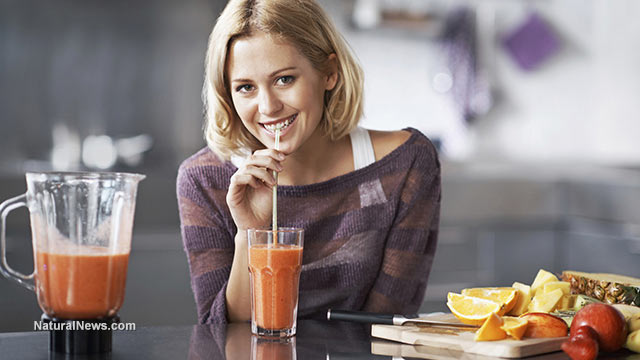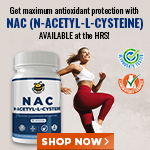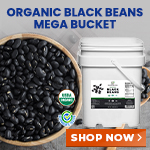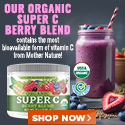Orange juice has 10 times more antioxidant power than previously thought
Monday, December 15, 2014 by: David Gutierrez, staff writer
Tags: orange juice, antioxidants, cancer prevention

- Newly released JFK files reveal Pentagon's role in creating Lyme disease and covid in the same lab
- Trump nominates VACCINE ZEALOT Susan Monarez to lead the CDC, sidelining RFK Jr.'s reform efforts
- Trump's greatest betrayal so far: Accelerating Middle East wars, silencing dissent, and serving Zionist masters
- STARDUST, a secretive Israeli-US startup, plans risky solar geoengineering experiment to BLOCK OUT THE SUN
- The hidden dangers in your kitchen: How cooking methods impact diabetes, cancer and aging
- Festive flavors: The sweet history, nutritional profile and health benefits of pecan pie
- Elon Musk: Aliens could be here on Earth RIGHT NOW
- Dr. Mike Yeadon releases 15-minute testimony - WATCH - about genocidal intent of COVID “vaccines”
- The forgotten hormone hero: How vitamin C quietly balances mood, stress and reproductive health
- Sugarcane extract superior to cholesterol-lowering drugs?
- HUGE: Putin claims 2020 election fraud in U.S. sparked Ukraine war, calls for peace talks with Trump
- California's social media censorship law struck down: A victory for free speech or a threat to online safety?
- Reclaim your health: How midlife exercise reverses years of inactivity
- Chris Rufo finally reveals abuse liberals unleashed on his wife and young kids...
- Pilots report mysterious lights 'moving at extreme speeds' across Oregon skies
- Florida takes a stand: DeSantis proposes permanent ban on mRNA vaccine mandates
- Arkansas embraces medical freedom with landmark ivermectin law
- Rep. Nancy Mace introduces bill to ban biological males from female facilities on federal property
- Newly released JFK files reveal Pentagon's role in creating Lyme disease and covid in the same lab
- Elon Musk: Aliens could be here on Earth RIGHT NOW
- Reclaim your health: How midlife exercise reverses years of inactivity
- Trump reverses course on Gaza plan, says “nobody is expelling Palestinians”
- EPA advisor admits the agency is funneling billions to climate groups ahead of Trump’s return to White House
- Big Pharma's $8 Billion bribery scheme exposed: how doctors are pushed to prescribe junk science, not heal
- Space war brewing? Russia threatens to destroy Starlink satellites
- A lack of integrity in Academia: Harvard professor found GUILTY of fraudulent research to promote CRT theory
- Survival 101: Effective EMF blocking techniques
- Rep. Nancy Mace introduces bill to ban biological males from female facilities on federal property
- Mike Adams Sermon 66: God will DESTROY ISRAEL for its wickedness
- Pilots report mysterious lights 'moving at extreme speeds' across Oregon skies
- 5 Simple steps to boost your brainpower: How to strengthen executive function in a distracted world
- Historian warns Israel may be entering an “IRREMEDIABLE DECLINE”
- Florida takes a stand: DeSantis proposes permanent ban on mRNA vaccine mandates
- RFK Jr.'s SSRI antidepressant investigation sparks liberal meltdown, exposes Big Pharma's dangerous game
- OpenAI whistleblower who dissented against how the company trained ChatGPT found dead
- Sugarcane extract superior to cholesterol-lowering drugs?
- EPA advisor admits the agency is funneling billions to climate groups ahead of Trump’s return to White House
- The Health Ranger releases “Vaccine Zombie” song and music video, using AI-animated zombies for the music video
- California's social media censorship law struck down: A victory for free speech or a threat to online safety?
- Dr. Mike Yeadon releases 15-minute testimony - WATCH - about genocidal intent of COVID “vaccines”
- The pandemic as a tool for INDOCTRINATION: Understanding “The Indoctrinated Brain” by Dr. Michael Nehls
- Mike Adams releases country western hit single: Goin’ Back in Time is Comin’ Home
- Mike Adams releases music poetry sensation: A Child of God
- RFK Jr. clears key hurdle: Sen. Susan Collins backs controversial HHS nominee, signaling a new era for health policy
- Florida takes a stand: DeSantis proposes permanent ban on mRNA vaccine mandates
- Unpacking the Lies That We’ve Been Fed – new song and music video released by Mike Adams, the Health Ranger
- Mike Adams releases new song and music video: Nothing More Disgusting Than a Globalist
- Congratulations to the FULLY UNVACCINATED as you resisted the COVID-19 PROPAGANDA MACHINE fueled by over $100 BILLION
- “Why we influenced the 2020 elections”: Facebook files reveal the coordinated effort to bury the Hunter Biden laptop story
- Michigan sheriff announces criminal investigation into 2020 election crimes, Dominion Voting Systems
- Israeli soldiers accused of even more torture and abuse in the West Bank
- Migrants are taking advantage of recent hurricanes to scam residents and loot their homes
- House Intelligence Committee calls for the ARREST and PROSECUTION of Dr. Anthony Fauci
- Peter Rost exposes Big Pharma corruption in his book “The Whistleblower: Confessions of a Healthcare Hitman”
- Red Cross issues warning to stop blood plasma donations from vaccinated people
- Scientists confirm: GENIUS brain function can be spontaneously unleashed in humans without any apparent cause
- EPA advisor admits the agency is funneling billions to climate groups ahead of Trump’s return to White House
- HYSSOP: What research reveals about the health benefits of this ancient holy herb
- Two containers with completed ballots fall out of truck in Florida
- Fully vaccinated about to see “tsunami” of illness and death, warns virologist
- Global leaders unite to clamp down on “misinformation” with UN-backed Cascais Declaration
- BREAKING: 2025 NDAA authorizes mandatory military draft of WOMEN across America… as Pentagon pursues global NUCLEAR war with both Russia and China at the same time
- Michael Yon warns of a ZIONIST TAKEOVER in Trump’s second administration
- BOMBSHELL: DNA testing kits are a SCAM to develop ethnic-specific bioweapons
- Ozempic and Wegovy weight loss drugs are injectable LIZARD VENOM PEPTIDES that may unleash a devastating wave of organ failure… side effects align with symptoms of SNAKE BITES
- Israeli soldiers accused of even more torture and abuse in the West Bank
- These 13 countries just signed an agreement to engineer a global FAMINE by destroying food supply
- NASA admits that climate change occurs because of changes in Earth’s solar orbit, and NOT because of SUVs and fossil fuels
- RFK Jr. clears key hurdle: Sen. Susan Collins backs controversial HHS nominee, signaling a new era for health policy
- Sermon 30: How Jesus reveals Caesar’s FAKE CURRENCY and FALSE AUTHORITY
- Coriander seeds: Ancient medicine backed by modern science
- Arizona officials claim Maricopa County needs 10-13 days to tabulate results of the election
Many of the chemicals that naturally occur in plant foods function as antioxidants, removing the free radical chemicals that cause cellular and DNA damage in the body and have been linked to various chronic diseases and many of the symptoms of aging. Citrus fruits are particularly high in antioxidants, and many researchers have suggested this as a potential cause for their many health benefits.
70 percent of antioxidants were going uncounted
To date, researchers have estimated the antioxidant potential of foods by simulating the digestion of food in the small intestine, in order to only measure antioxidants that can actually be used by the body. This method only allows the measurement of antioxidants in liquid form, however."The problem is that the antioxidant activity of the solid fraction (the fibre) isn't measured, as it's assumed that it isn't beneficial," researcher Jose Angel Rufian Henares said. "However, this insoluble fraction arrives at the large intestine and the intestinal microbiota can also ferment it and extract even more antioxidant substances, which we can assess with our new methodology."
In order to correct his limitation, the researchers developed a new laboratory method, called "global antioxidant response" (GAR), to simulate the digestion of food not just in the small intestine but the entire gut. This allows an estimate of the antioxidant activity of solid foods.
According to the GAR method of analysis, the antioxidant contents of many foods have been drastically underestimated and will need to be revised. For example, traditional antioxidant activity tests deliver a value of approximately 2.3 mmol Trolox/L for orange juice. The GAR method, in contrast, delivers a value of 23 mmol Trolox/L.
"The antioxidant activity is, on average, ten times higher than that which everyone thought up until now, and not just in juices, but also in any other kind of food analysed with this methodology," researcher Rufian Henares said.
The researchers found that 70 percent of the antioxidant capability of orange juice came from soluble fiber, rather than liquids. Based on the new values, they estimated that as much as 12 percent of the antioxidant content of the Spanish diet comes from citrus juices.
The new method also allowed the researchers to create a mathematical model to help determine which storage or processing methods could maintain the highest antioxidant content in various juices.
"This technique and the results derived from it could allow dieticians and health authorities to better establish the values of the antioxidant capacity of foods, " Henares said.
Orange juice prevents cancer, stroke
The antioxidants in orange juice are believed to be behind many of its health benefits, including prevention of cancer and stroke. A 2013 study in the journal Nutrition and Cancer: An International Journal reviewed all the research on orange juice and cancer prevention, concluding that antioxidants in orange juice helped prevent cancers of the blood, breast, colon and liver."OJ could contribute to chemoprevention at every stage of cancer initiation and progression," the researchers wrote. "Among the most relevant biological effects of OJ is the juice's antigenotoxic and antimutagenic potential."
A 2012 study published in the journal Stroke found that women with a high amount of antioxidants known as flavanones in their diet were 19 percent less likely to suffer blood-clot-related stroke than women with the lowest flavanone intake. Eighty-two percent of the flavanones consumed in the study came from oranges and orange juice, while another 14 percent came from grapefruits and grapefruit juice.
Sources:
http://www.agenciasinc.es
http://www.sciencedirect.com
http://medicalxpress.com
http://sciencedaily.com
http://sciencedaily.com
http://science.naturalnews.com
Orange juice at FETCH.news
Get independent news alerts on natural cures, food lab tests, cannabis medicine, science, robotics, drones, privacy and more.
Take Action: Support Natural News by linking to this article from your website
Permalink to this article:
Embed article link: (copy HTML code below):
Reprinting this article:
Non-commercial use OK, cite NaturalNews.com with clickable link.
Follow Natural News on Facebook, Twitter, Google Plus, and Pinterest
Science News & Studies
Medicine News and Information
Food News & Studies
Health News & Studies
Herbs News & Information
Pollution News & Studies
Cancer News & Studies
Climate News & Studies
Survival News & Information
Gear News & Information
News covering technology, stocks, hackers, and more



"Big Tech and mainstream media are constantly trying to silence the independent voices that dare to bring you the truth about toxic food ingredients, dangerous medications and the failed, fraudulent science of the profit-driven medical establishment.
Email is one of the best ways to make sure you stay informed, without the censorship of the tech giants (Google, Apple, Facebook, Twitter, YouTube, etc.). Stay informed and you'll even likely learn information that may help save your own life."
–The Health Ranger, Mike Adams













































